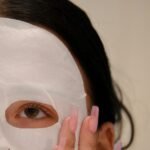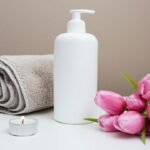Vietnam boasts a rich tapestry of herbal traditions that have been woven into the fabric of its culture for centuries. These practices are deeply rooted in the country’s history, influenced by a blend of indigenous knowledge and the teachings of traditional Chinese medicine.
This holistic approach to health and wellness emphasizes the interconnectedness of body, mind, and spirit, showcasing a profound respect for nature and its offerings. Herbal traditions in Vietnam are characterized by their diversity, reflecting the country’s varied geography and climate. From the lush rice paddies of the Mekong Delta to the mountainous regions of the north, different herbs and plants thrive in these environments, each with unique properties and benefits.
The use of herbs in beauty rituals is particularly significant, as they are believed to enhance not only physical appearance but also emotional well-being. This article delves into two prominent elements of Vietnamese herbal beauty traditions: the lotus and bamboo, both of which hold a special place in the hearts of the Vietnamese people.
Key Takeaways
- Vietnam has a rich tradition of using herbal remedies in beauty practices, with a focus on lotus and bamboo.
- The lotus holds great significance in Vietnamese beauty, symbolizing purity, serenity, and elegance.
- Lotus is known for its skincare and haircare benefits, including moisturizing, anti-aging, and soothing properties.
- Bamboo is being incorporated into contemporary beauty products for its exfoliating, hydrating, and strengthening qualities.
- Both lotus and bamboo play important roles in Vietnamese culture and beauty practices, and their use reflects sustainable and eco-friendly beauty trends.
The Significance of Lotus in Vietnamese Beauty
The lotus flower, known as “hoa sen” in Vietnamese, is more than just a beautiful bloom; it is a symbol of purity, resilience, and spiritual enlightenment in Vietnamese culture. Revered for its ability to rise from muddy waters and bloom into a pristine flower, the lotus embodies the idea of overcoming adversity. This symbolism extends into the realm of beauty, where the lotus is celebrated for its aesthetic qualities as well as its numerous health benefits.
In traditional Vietnamese beauty practices, the lotus is often used in various forms, including oils, extracts, and infusions, to enhance skin health and radiance. Lotus has been integrated into beauty rituals for generations, with its petals, seeds, and roots all being utilized for their unique properties. The petals are often steeped to create soothing toners or masks that hydrate and rejuvenate the skin.
Meanwhile, lotus seeds are known for their nourishing qualities and are frequently ground into powders or incorporated into creams. The roots, rich in vitamins and minerals, are also used in various formulations aimed at promoting healthy skin and hair. This multifaceted approach to using the lotus highlights its significance not only as a beauty ingredient but also as a cultural icon that embodies the essence of Vietnamese identity.
The Benefits of Lotus in Skincare and Haircare
The benefits of lotus in skincare are extensive, making it a sought-after ingredient in both traditional and modern beauty products. One of the most notable properties of lotus is its ability to hydrate and nourish the skin. The flower contains natural oils that help to lock in moisture, making it an excellent choice for those with dry or dehydrated skin.
Additionally, lotus is rich in antioxidants, which combat free radicals and help to prevent premature aging. This makes it a popular ingredient in anti-aging creams and serums that aim to promote youthful skin. In haircare, lotus extracts are equally beneficial.
The nourishing properties of the lotus flower can help strengthen hair strands, reduce breakage, and promote overall scalp health. Lotus oil is often used in hair masks or conditioners to provide deep hydration and shine. Furthermore, its soothing properties can alleviate scalp irritation and promote a balanced environment for hair growth.
The versatility of lotus as an ingredient underscores its importance in both skincare and haircare routines, making it a staple in many beauty regimens.
Incorporating Bamboo into Contemporary Beauty Products
Bamboo has emerged as a key ingredient in contemporary beauty products, celebrated for its sustainability and versatility. Known for its rapid growth and minimal environmental impact, bamboo is often referred to as a “green” resource. In recent years, beauty brands have begun to harness the power of bamboo extracts, powders, and oils to create innovative products that cater to eco-conscious consumers.
Bamboo’s high silica content is particularly noteworthy; this mineral is essential for maintaining healthy skin and hair. In skincare formulations, bamboo extract is often included for its exfoliating properties. It can gently slough away dead skin cells without causing irritation, making it suitable for sensitive skin types.
Additionally, bamboo is known for its ability to absorb excess oil, making it an ideal ingredient for those with oily or combination skin. In haircare products, bamboo extract can strengthen hair follicles and improve elasticity, resulting in healthier-looking hair. The incorporation of bamboo into contemporary beauty products not only enhances their efficacy but also aligns with a growing demand for sustainable ingredients.
The Role of Bamboo in Vietnamese Culture and Beauty Practices
Bamboo holds a significant place in Vietnamese culture, symbolizing resilience, flexibility, and strength. It is often associated with traditional values and is used in various aspects of daily life, from construction to crafts. In beauty practices, bamboo has been utilized for centuries due to its natural properties that promote health and wellness.
The Vietnamese have long recognized the benefits of bamboo shoots and leaves, incorporating them into dietary practices as well as topical applications.
The fine particles derived from bamboo can effectively remove impurities from the skin while providing nourishment at the same time.
Additionally, bamboo water—extracted from young bamboo shoots—is often used as a refreshing toner or mist that hydrates the skin while imparting a subtle fragrance. This deep-rooted connection between bamboo and beauty practices reflects the Vietnamese people’s appreciation for natural resources that promote holistic well-being.
Sustainable and Eco-Friendly Aspects of Lotus and Bamboo Beauty Products
Lotus: A Minimal-Impact Ingredient
Lotus stands out as a prime example of an environmentally friendly ingredient. Its cultivation requires minimal resources, thriving in waterlogged conditions without the need for chemical fertilizers or pesticides. This makes it an attractive choice for beauty brands looking to minimize their ecological footprint.
Bamboo: A Sustainable Powerhouse
Bamboo is another highly sustainable plant that is gaining popularity in the beauty industry. Its rapid growth rate allows it to be harvested without depleting natural resources. Moreover, bamboo absorbs carbon dioxide at a higher rate than many other plants, contributing positively to air quality.
Supporting Sustainable Beauty Brands
By incorporating lotus and bamboo into their products, beauty brands can appeal to environmentally conscious consumers while promoting sustainable practices within the industry. Consumers can support these brands by choosing lotus and bamboo-based products, enjoying the benefits of these natural ingredients while contributing to a more eco-friendly beauty industry.
Exploring the Modern Use of Lotus and Bamboo in Beauty Rituals
In contemporary beauty rituals, both lotus and bamboo have found their way into various products that cater to modern consumers’ needs. The rise of K-beauty (Korean beauty) trends has popularized the use of botanical ingredients like lotus in sheet masks, serums, and creams that promise hydration and rejuvenation. These products often highlight the purity associated with lotus extracts while showcasing their effectiveness through innovative formulations.
Bamboo has also made significant strides in modern beauty routines. Brands have developed bamboo-infused cleansers that utilize its natural exfoliating properties to provide gentle yet effective cleansing without harsh chemicals. Additionally, bamboo charcoal has gained popularity as an ingredient in face masks and cleansers due to its ability to draw out impurities from the skin.
This modern interpretation of traditional ingredients reflects a growing appreciation for natural solutions that align with contemporary lifestyles.
Embracing Vietnam’s Herbal Traditions in Global Beauty Trends
As global beauty trends continue to evolve towards natural and holistic approaches, Vietnam’s herbal traditions are gaining recognition on an international scale. The unique properties of lotus and bamboo resonate with consumers seeking effective yet gentle solutions for their skincare and haircare needs. Beauty brands worldwide are beginning to incorporate these ingredients into their formulations, recognizing their cultural significance as well as their efficacy.
The embrace of Vietnam’s herbal traditions within global beauty trends signifies a broader movement towards sustainability and authenticity in the industry. Consumers are increasingly drawn to products that tell a story—those that reflect cultural heritage while offering tangible benefits. As more people discover the advantages of lotus and bamboo in beauty rituals, Vietnam’s rich herbal traditions are poised to influence global beauty standards for years to come.









